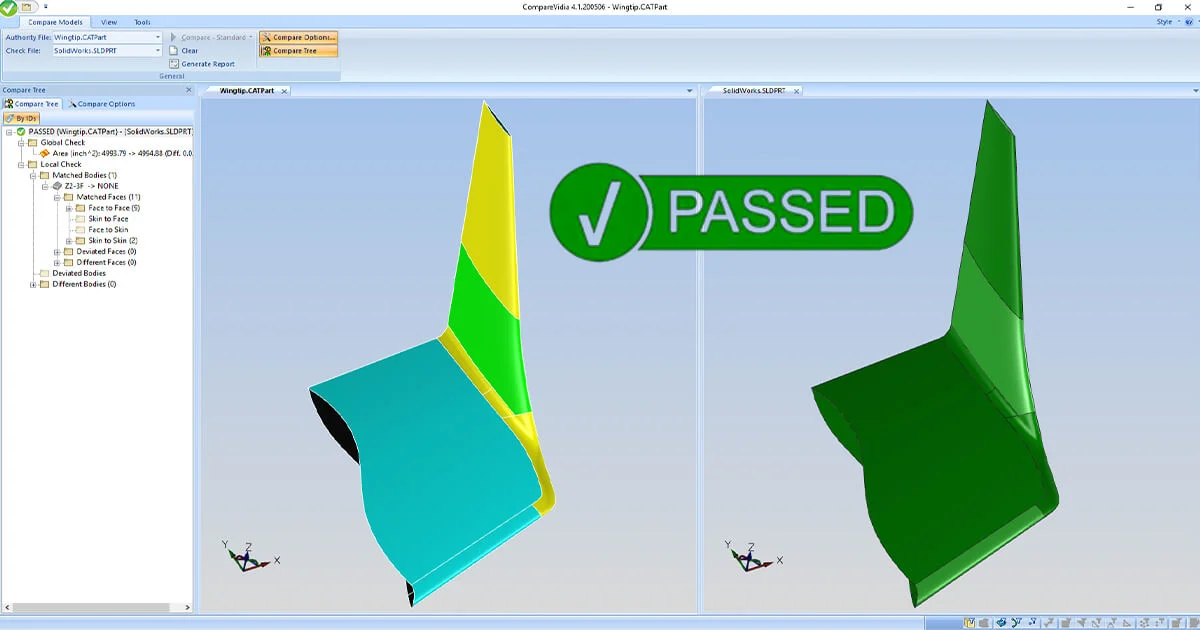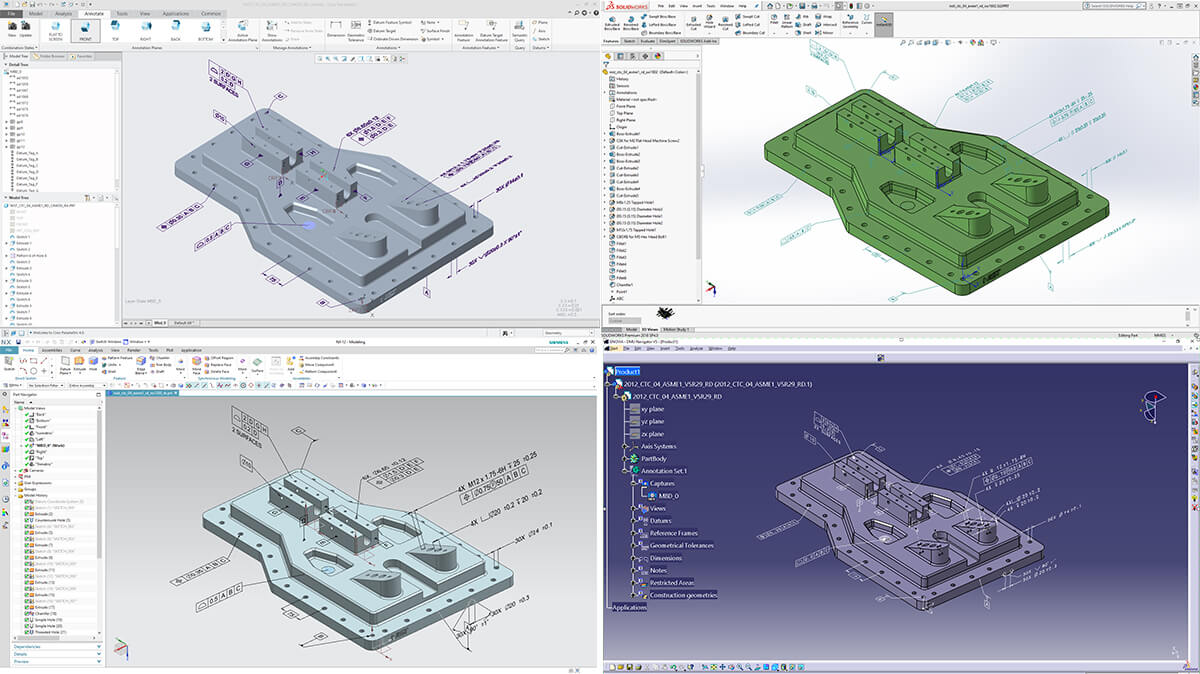CompareVidia
Validation CAO dérivée et comparaison des révisions
CompareVidia est un produit de Capvidia.
CompareVidia est un produit de Capvidia.
CompareVidia est une application facile à utiliser pour valider et comparer des modèles CAO. Un flux de travail simple vous permet de charger deux modèles CAO et de les comparer en fonction de vos critères. Les modèles sont classés comme RÉUSSI ou ÉCHEC. Un rapport est automatiquement généré pour certifier numériquement la conformité à des normes telles que la « Norme d’assurance qualité pour la définition de produits numériques » D6-51991 de Boeing.
Solution préférée des principaux fabricants, CompareVidia offre un moyen efficace, puissant et automatique de valider l'intégrité des modèles CAO à différentes étapes du cycle de vie des produits numériques.

Découvrez comment et pourquoi implémenter la définition basée sur un modèle (MBD).
Visitez la section dédiée

Envoyez vos questions techniques à nos experts !
Mettez-vous en relation avec un expert EnginSoft qui pourra vous apporter une réponse fiable à votre question technique ou vous recommander une solution éprouvée.
CASE STUDY
This article explores the practical implementation of Geometric Dimensioning and Tolerancing (GD&T) according to the ISO GPS standards, focusing on the functional definition and consistent application of Datum Reference Frames (DRFs). DRFs, derived from a component’s functional geometry and assembly sequence, constrain six degrees of freedom to ensure stable alignment and reproducibility during production and assembly.
tolerances mbdvidia comparevidia gdtadvisor cetol

training courses
La formation sur les spécifications géométriques des produits et l'analyse de tolérance aborde les problématiques liées à la gestion des tolérances lors de la conception d’un produit et les conséquences que cela peut avoir sur les coûts de production.
cetol tolerances
CASE STUDY
In a recent interview, Enrico Boesso (EnginSoft) and Daniel Campbell (Capvidia) discussed how Model-Based Definition (MBD) is transforming manufacturing by replacing traditional 2D drawings with data-rich 3D models as the "single source of truth".
comparevidia mbdvidia tolerances digital-manufacturing mechanics
CASE STUDY
This article is the first part of a four-part mini-series exploring key aspects of modern tolerance management in product development. It focuses on Dimensional Management (DM) — a simulation-based engineering methodology essential for ensuring dimensional quality across a product’s lifecycle.
tolerances mbdvidia comparevidia gdtadvisor cetol

CASE STUDY
Special Springs commissioned EnginSoft’s engineers to calculate the production cost repercussions of a technical product modification requested by an important customer.
eztol mechanics cetol tolerances